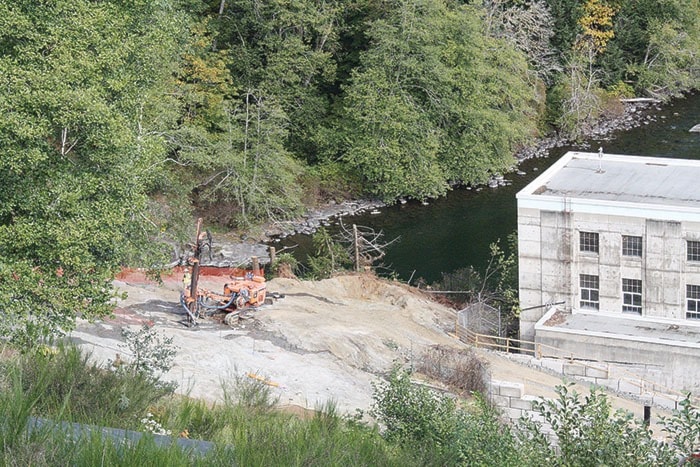Blasting for the new tailrace of the John Hart Generating Station replacement project knocked out a generator and caused a reduction in water flow in the Campbell River Thursday afternoon.
BC Hydro has a standing commitment with the community of Campbell River to advise of any unplanned river flow reductions in the Campbell River that go below 80 cubic metres per second (m3/s) - the river bottom is fully covered with water at 80 m3/s - and for more than 10 minutes. The power utility issued a notice about the unplanned flow reduction today at 2 p.m.
Hydro had just completed increasing the flow of the river from 30 m3/s to about 80 m3/s Thursday morning as planned to benefit chinook spawning after a summer of intense drought.
Later on Thursday, at about 3 p.m., InPower BC had their first controlled blast in rock for the new tailrace (water discharge from the new powerhouse and tunnel) as part of the John Hart Generating Station Replacement Project. Proactive plans and coordination were in place, including BC Hydro staff and crews inside the powerhouse monitoring the 68-year-old generating units. Two units and one penstock were out of service at the time to repair a small leak in the penstock, and two penstocks and four units were operating at full capacity.
The blast, which was within prescribed vibration limits, resulted in generator #4 being forced out of service, Hydro spokesperson Stephen Watson said.
“Crews immediately responded and within 30 minutes the unit was spinning back online,” Watson said. “In consideration for recreation fishers in the river downstream, BC Hydro increased the generator discharge following normal ramp-up procedures versus immediately bringing the unit back to full capacity.”
Hdyro officials estimate the Campbell River flow dropped from about 80 m3/s to about 62 m3/s. Government fish agencies were notified and biologists were dispatched to key sites in the upper river.
“We believe there to be minimal to no impacts to fish. No stranded fish were observed,” Watson said.
That conclusion was based on the amount of time the generator was down, the delay in flow response to the shutdown and by comparing it to the impact on gravel spawning beds of a high river flow last December.
BC Hydro and InPower BC will be discussing the tailrace area blasting work and further refinements in the rock excavation process beside the old powerhouse, as well as further mitigation and contingency plans for the six generating units. All three penstocks are now in operation.
The John Hart project is building a water bypass facility within the new underground powerhouse so that if one or more units are forced offline, the bypass facility will automatically be initiated to re-direct the water and maintain downstream river flow continuity. Maintaining downstream river flows for fish is one of the three reasons for the project.
